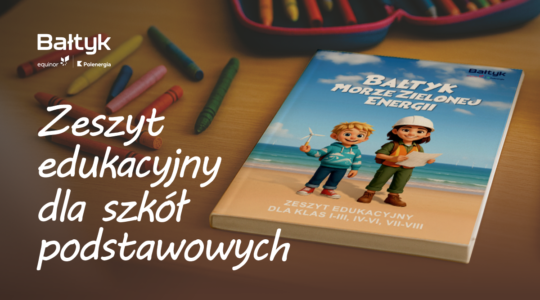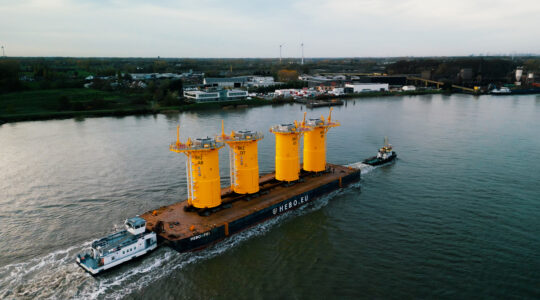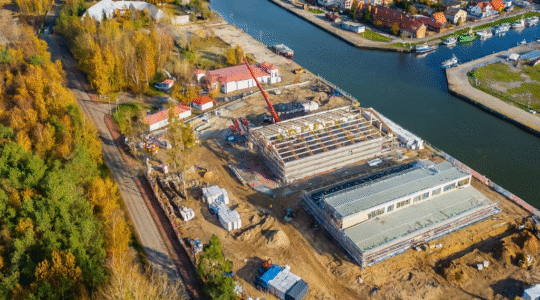
"Anna" wind and wave intensity studies completed for the MFW Bałtyk I offshore wind project
Equinor and Polenergia have completed more than a year's worth of wind and wave intensity studies for Poland’s most advanced offshore wind project of the so-called second phase - the MFW Bałtyk I. The ocean and meteorological data collected in the “Anna” study will help determine the expected power production from the wind farm, as well as its design from foundations to blades.
– Wind research is an important step in the development of the MFW Bałtyk I wind farm which is the most advanced project of the second wave of offshore wind development in Poland. Our ambition is to mature the project to participate in the offshore wind auction planned for 2025 as well as work with our partners to increase competitiveness in the pending auctions for offshore wind to support Poland's energy transition with our experience and financing capabilities – says Michał Kołodziejczyk, president of Equinor in Poland.
Environmental impact assessment and energy production forecasts
Wind and wave research is an important input to the environmental impact assessment report being prepared based on which an application for environmental decision will be prepared. It is a document necessary for participation in the offshore wind energy auction.
As the wind and wave studies started on the International Women’s Day, the team decided to name the LiDAR buoy used in the study “Anna”. The data was collected for more than 12 months in the area of the MFW Bałtyk I offshore farm, 81 km from the coastline.
The LiDAR makes it possible to accurately measure the wind speeds, which is key to determine the energy production at a given location. In addition to accurately measuring wind speed and direction, the device also measures wave height and length, the direction of ocean currents and temperature. The use of LiDAR is an alternative to traditional Metocean measurements using measuring masts.
Polish companies with international partners
The wind surveys were conducted by RPS, an international company with experience in this type of project around the world. All work was closely monitored by meteorological and oceanographic experts from RPS and Equinor to ensure high quality and consistent data. Subcontractors responsible for placing the equipment at sea and towing it to port after the campaign were the Polish companies MEWO and Fairplay Towage Polska, respectively.
– We are interested in having as many Polish companies as possible participate in the development of the Baltyk I offshore wind project. We are glad that once again we are bringing together Polish entities that know the local conditions well with international partners who can share their experience and know-how – says Maciej Stryjecki, Director of the Offshore Wind Farm Department at Polenergia.
Equinor and Polenergia are jointly developing three offshore wind farm projects in the Polish part of the Baltic Sea with a total capacity of about 3 GW, enough to power more than 4 million Polish households. According to the schedule, the 1.56 GW MFW Bałtyk I will be commissioned in 2029. Two years earlier, offshore farms MFW Bałtyk II and MFW Bałtyk III, with a total capacity of 1.44 GW, will start producing energy.
The Baltic projects carried by Equinor and Polenergia are part of an energy transformation project for the Polish energy sector, which calls for offshore power plants with a total capacity of nearly 11 GW to be built in the Polish part of the Baltic Sea by 2040.
Podobne wpisy

Educational Workbook “Bałtyk. The Sea of Green Energy” – Discover the Power of Wind with the Bałtyk Projects!

First Transition Pieces on Their Way – Advancing the Bałtyk 2 and 3 Projects

